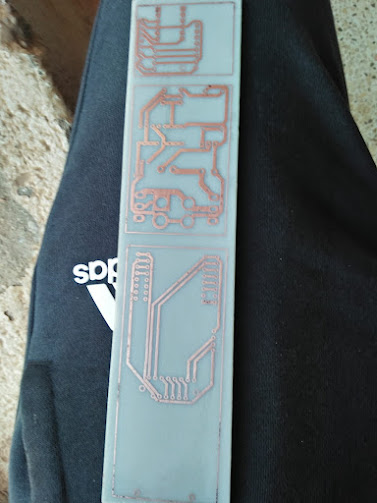FABRICATION OF THE SRM NOZZLE, CASE AND BULK HEAD
Let me begin with some background information 😅
Rockets come in various sizes, ranging from the tiny hobbyist ones to the large ones built by organizations like NASA and SpaceX.
To propel the rockets, we need a fuel that will generate enough thrust to get our rocket off the ground. In order to achieve this, we have a couple of ways but two of the most common include using a Solid Rocket Motor (SRM - where your fuel is in solid state) or a liquid propelled engine. (Using liquid fuels)
As Nakuja Project, our goal is to fabricate a liquid propelled engine that will take a cubesat to space.
The liquid propelled engines are better compared to the SRM in several ways, but they are tough and complex to design and build.
The SRM is a simpler alternative due to it's simple structure.
With our goal being to learn and to build a liquid propelled engine, we decided to first build a rocket propelled using the SRM then later build the liquid propelled engine at a point in time when we will have sharpened our skills.
In the initial stages of building the SRM powered rocket, we used PVC as the case that held our fuel. (The fuel is composed of sugar and potassium nitrate)
From the results we obtained, we achieved quite impressing values that prompted us to scale up our fuel- thus requiring us to design an fabricate a larger and more efficient casing.
Now back to the main thing😁
We have been working on an SRM entitled N-2 that is to reach a desired altitude of 300m, to be launched in September 2020.
The SRM to be used has to be contained in a larger casing and we intend to use a nozzle to achieve greater thrust.
To do this, we have been Machining a nozzle, case and bulk head at iPIC, using their facilities (CNC lathe), also we used the lathe found at the JKUAT engineering workshops.
The casing is what contains the fuel, the basic structure is that of a hollow tube. The material used was aluminium, and the thickness being 11mm.
The bulk head serves as the top cover of the case, to hold the fuel in place.
The nozzle is put at the rear end, where the high pressure air will pass through to yield our thrust.
The three items were made in a span of nearly 2 weeks, testing is yet to be done.
The next agenda is to cast our fuel and add our fuel in molten state to the new fuel cylinder.
Keep checking our blog for more information on the updates of Machining and testing, and on our progress.
Thank you for your time😄☺



Comments
Post a Comment